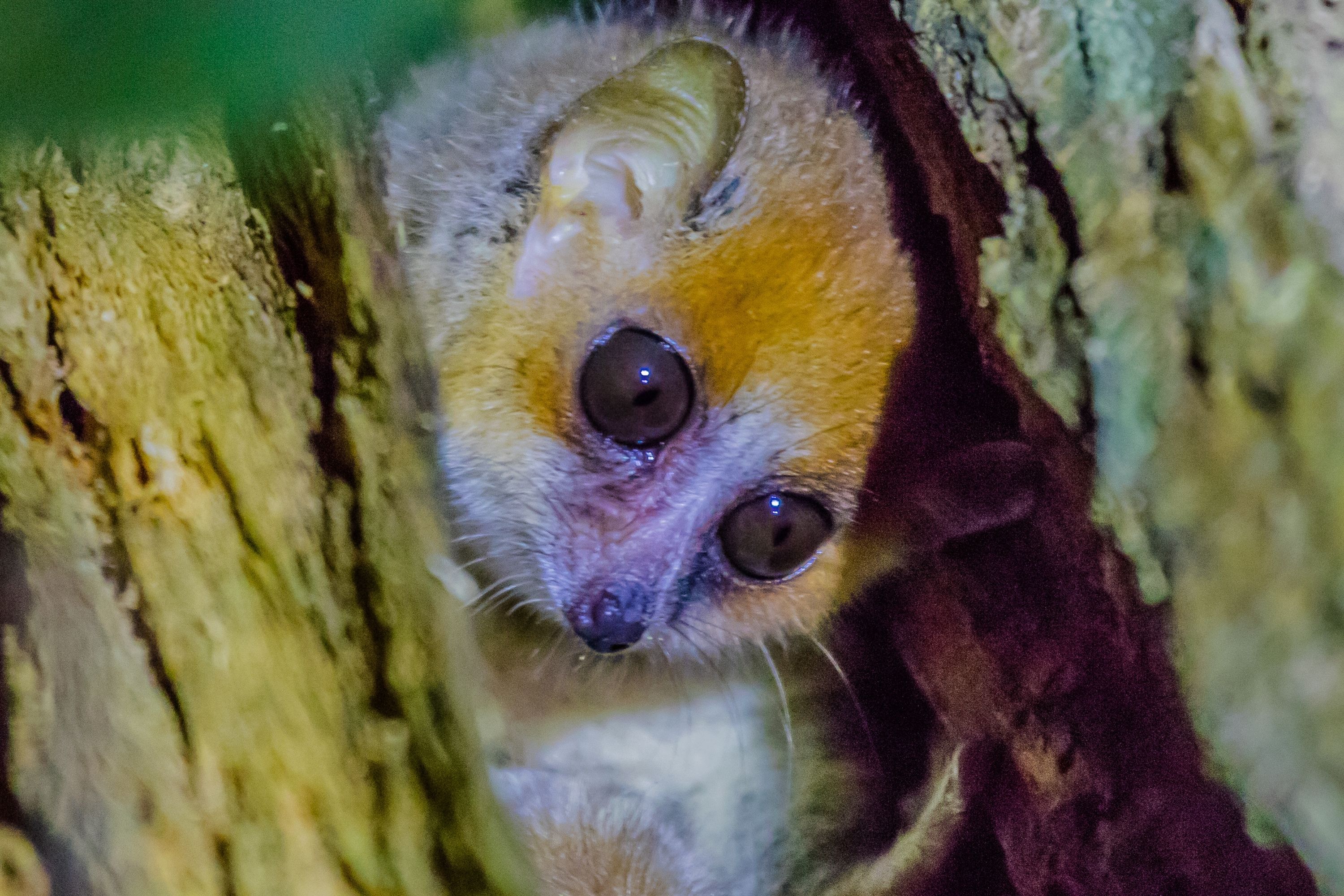Goodman's mouse lemur
(Microcebus lehilahytsara)

Description
Goodman's mouse lemur (Microcebus lehilahytsara) is a species of mouse lemur from the region near Andasibe in eastern Madagascar. The species is named in honor of primatologist Steven M. Goodman. "Lehilahytsara" is a combination of the Malagasy words which mean "good" and "man". The finding was presented August 10, 2005, along with the discovery of the northern giant mouse lemur (Mirza zaza) as a separate species. In 2005, Goodman was awarded a MacArthur Fellowship for his discovery and further research in Madagascar. Mouse lemurs are among the smallest primates, and Goodman's mouse lemur is no exception. Although not the smallest overall, Goodman's mouse lemur has a head-body length comparable to M. berthae which is the smallest known primate. The average size ranges from 45-48 grams, with males being slightly larger than females. Goodman's mouse lemur is mainly maroon with a white underbelly and orange tint on their backs. Goodman's lemurs undergo daily torpor as well as winter torpor. Their tails are able to store fat which is useful in preparing for winter torpor. Although, almost all females experience torpor each winter, not all males go into winter torpor annually. For those males that do enter winter torpor, they exit torpor on average 20 days prior to females. This is likely so males can better prepare for mating which happens almost immediately following the ending of female winter torpor. The males that do not go into winter torpor are often older males that are better able to compete against younger males in procuring a mate; although, they often still undergo daily torpor. Goodman's mouse lemurs spend most of their waking time alone. They are generally only found in pairs during reproduction and when altercations. Approximately 51% of these altercations involve food. Although females tend to be smaller than males, when fighting over food, females often come out as the winners. This is because females are more dominant than males in Goodman's mouse lemurs. Because females are more dominant, males tend to have a greater foraging area. In some cases, the male's feeding area can be up to four times the size of females feeding area. It has been proposed that the larger area is due to being chased away from better feeding grounds by the dominant females.
Taxonomic tree:







